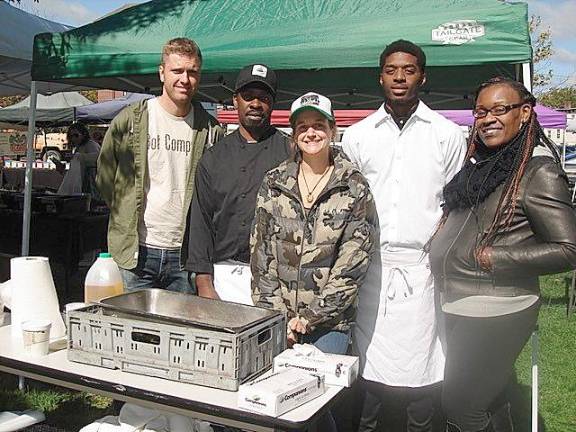County's 'root to stalk' approach feeds the hungry, reduces food waste
Goshen. The county's recycling program offers at-cost composters and hot soup at the Goshen Farmers Market. RECAP volunteers recover leftover edible food from the farmers’ market for pick up by the Orange County Office of the Aging and distribution to Arden Hill Hospital. 'Education is the overall problem in food waste,' says recycling coordinator Ermin Siljkovic.

Orange County is helping to feed the hungry while reducing food waste at the same time.
Ermin Siljkovic said setting up a booth at the Goshen Farmers’ Market is a good way to meet these goals and get the word out. Every Friday through Oct. 25, Siljkovic, recycling co-coordinator of the Orange County Department of Public Works, Division of Environmental Facilities and Services, manages a booth that offers composting barrels. He also partners with RECAP (Regional Economic Community Action Program) in Middletown to educate the public on using food items to their fullest.
“We’re doing more than selling composters at cost," he said. "We’re focusing on reducing food waste and providing food for those who need it."
He said RECAP demonstrates the "root to stalk" method, which means using the entire food item when preparing meals through the week. He pointed to a pot of soup, simmering on a hotplate to share with the public, that was made in this economical way.
“Education is the overall problem in food waste,” he said. “Forty percent of food in the United States is thrown away. We’re trying to reduce that number through education. We want to keep good, edible food out of the landfill.”
At the end of the day, RECAP volunteers recover leftover edible food that wasn’t sold at the farmers’ market. An Orange County Office of the Aging employee, driving a truck, picks up the collected food and brings it to the former Arden Hill Hospital, where it’s stored in a refrigerator.
RECAP recovers the food every Monday and uses it for food preparation classes that include food handling and cooking techniques. The remaining food is given to those who attend the classes.
“It’s a double benefit,” said Siljkovic. "They’re feeding people and helping to train them for a career in food service.”
Siljkovic says there are multiple solutions to addressing the food waste problem. For example, there’s working with FeedHV, a regional food rescue organization that recovers donated food items from farmers, restaurants, supermarkets, caterers, and others, to transport it to non-profits and other organizations with food assistance programs, like soup kitchens and food pantries.
To learn more about this valuable assistance program and, if wanting to help as a volunteer, go online at FeedHV.org.
Orange County Department of Planning and the Orange County Department of Health are also included in this group effort to reduce waste and distribute available food to where it’s needed.